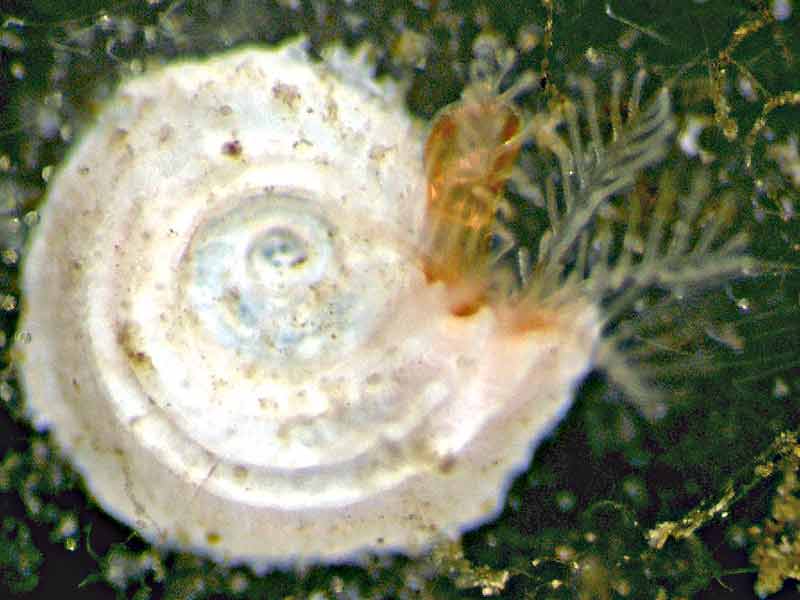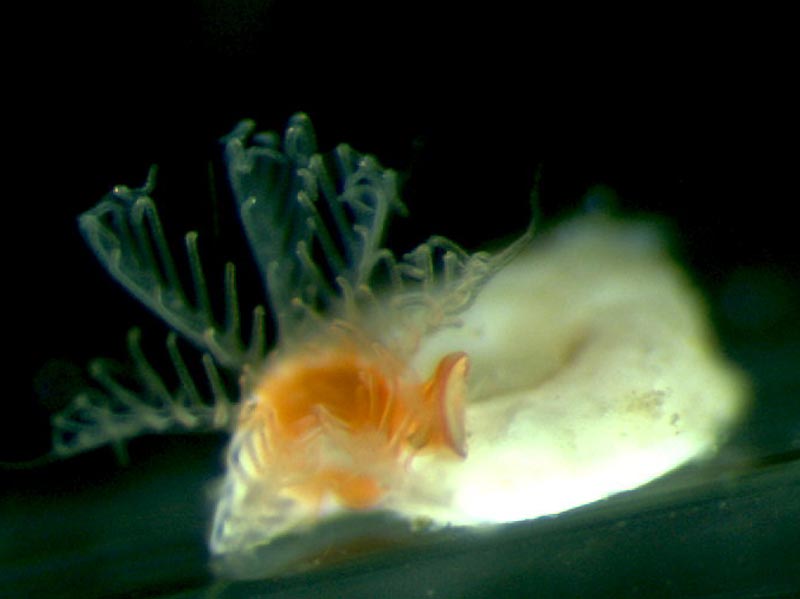A bristleworm (Janua heterostropha)
Distribution data supplied by the Ocean Biodiversity Information System (OBIS). To interrogate UK data visit the NBN Atlas.Map Help
| Researched by | Ken Neal | Refereed by | Admin |
| Authority | (Montagu, 1803) | ||
| Other common names | - | Synonyms | Spirorbis pagenstecheri (Quatrefages, 1866), Janua pagenstecheri (Quatrefages, 1866) |
Summary
Description
Recorded distribution in Britain and Ireland
Recorded from a few locations in Britain but is probably under recorded and common on all rocky shores.Global distribution
Considered to be the most common spirorbid in the world, especially in Britain, extending from the Arctic Circle to the tropics.Habitat
Occurs on stones, shells and algae from high water of neap tides to depths of 120 m. In the intertidal it can be found from sheltered to wave exposed shores, which it survives by inhabiting crevices.Depth range
-Identifying features
- Tube is coiled with the opening facing anti-clockwise (dextral).
- Coil diameter up to 2 mm.
- Tube with three longitudinal ridges (which may be lost by scour in larger individuals).
- Embryos are brooded in a brood chamber attached to the operculum.
Additional information
No text enteredListed by
- none -
Bibliography
Bruce, J.R., Colman, J.S. & Jones, N.S., 1963. Marine fauna of the Isle of Man. Liverpool: Liverpool University Press.
Crothers, J.H. (ed.), 1966. Dale Fort Marine Fauna. London: Field Studies Council.
Foster-Smith, J. (ed.), 2000. The marine fauna and flora of the Cullercoats District. Marine species records for the North East Coast of England. Sunderland: Penshaw Press, for the Dove Marine Laboratory, University of Newcastle upon Tyne.
Hayward, P., Nelson-Smith, T. & Shields, C. 1996. Collins pocket guide. Sea shore of Britain and northern Europe. London: HarperCollins.
Howson, C.M. & Picton, B.E., 1997. The species directory of the marine fauna and flora of the British Isles and surrounding seas. Belfast: Ulster Museum. [Ulster Museum publication, no. 276.]
Knight-Jones, P. & Knight-Jones, E.W., 1977. Taxonomy and ecology of British Spirorbidae (Polychaeta). Journal of the Marine Biological Association of the United Kingdom, 57, 453-499.
Datasets
Fenwick, 2018. Aphotomarine. Occurrence dataset http://www.aphotomarine.com/index.html Accessed via NBNAtlas.org on 2018-10-01
NBN (National Biodiversity Network) Atlas. Available from: https://www.nbnatlas.org.
OBIS (Ocean Biodiversity Information System), 2024. Global map of species distribution using gridded data. Available from: Ocean Biogeographic Information System. www.iobis.org. Accessed: 2024-04-25
Citation
This review can be cited as:
Last Updated: 19/08/2004




